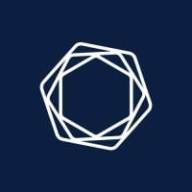

Sonatype Lifecycle and Tenable.io Web Application Scanning compete in the application security space. Sonatype has the upper hand in ease of deployment and customer support, while Tenable.io offers a more comprehensive feature set.
Features: Sonatype Lifecycle focuses on detailed dependency analysis, proactive vulnerability identification, and a favorable costing model. Tenable.io offers extensive scanning capabilities, integration flexibility, and feature depth, providing a robust security solution.
Room for Improvement: Sonatype could benefit from enhanced reporting capabilities, broader integration options, and improved data presentation. Tenable.io could work on refining scanning speed, accuracy, and adaptability.
Ease of Deployment and Customer Service: Sonatype Lifecycle has a straightforward deployment process and a responsive support team. Tenable.io's deployment is slightly more complex, but its customer service is efficient and knowledgeable, addressing user needs effectively.
Pricing and ROI: Sonatype Lifecycle is seen as cost-effective with a clear ROI due to its pricing simplicity. Tenable.io faces criticism for higher costs, but users feel the investment is justified by its extensive feature set and enhanced security posture.


Sonatype Lifecycle is an open-source security and dependency management software that uses only one tool to automatically find open-source vulnerabilities at every stage of the System Development Life Cycle (SDLC). Users can now minimize security vulnerabilities, permitting organizations to enhance development workflow. Sonatype Lifecycle gives the user complete control over their software supply chain, allowing them to regain wasted time fighting risks in the SDLC. In addition, this software unifies the ability to define rules, actions, and policies that work best for your organizations and teams.
Sonatype Lifecycle allows users to help their teams discover threats before an attack has the chance to take place by examining a database of known vulnerabilities. With continuous monitoring at every stage of the development life cycle, Sonatype Lifecycle enables teams to build secure software. The solution allows users to utilize a complete automated solution within their existing workflows. Once a potential threat is identified, the solution’s policies will automatically rectify it.
Benefits of Open-source Security Monitoring
As cybersecurity attacks are on the rise, organizations are at constant risk for data breaches. Managing your software supply chain gets trickier as your organization grows, leaving many vulnerabilities exposed. With easily accessible source code that can be modified and shared freely, open-source monitoring gives users complete transparency. A community of professionals can inspect open-source code to ensure fewer bugs, and any open-source dependency vulnerability will be detected and fixed rapidly. Users can use open-source security monitoring to avoid attacks through automatic detection of potential threats and rectification immediately and automatically.
Reviews from Real Users
Sonatype Lifecycle software receives high praise from users for many reasons. Among them are the abilities to identify and rectify vulnerabilities at every stage of the SDLC, help with open-source governance, and minimize risk.
Michael E., senior enterprise architect at MIB Group, says "Some of the more profound features include the REST APIs. We tend to make use of those a lot. They also have a plugin for our CI/CD.”
R.S., senior architect at a insurance company, notes “Specifically features that have been good include:
• the email notifications
• the API, which has been good to work with for reporting, because we have some downstream reporting requirements
• that it's been really user-friendly to work with.”
"Its engine itself is most valuable in terms of the way it calculates and decides whether a security vulnerability exists or not. That's the most important thing. Its security is also pretty good, and its listing about the severities is also good," says Subham S., engineering tools and platform manager at BT - British Telecom.
Tenable.io Web Application Scanning safely, accurately and automatically scans your web applications, providing deep visibility into vulnerabilities and valuable context to prioritize remediation.
We monitor all Application Security Tools reviews to prevent fraudulent reviews and keep review quality high. We do not post reviews by company employees or direct competitors. We validate each review for authenticity via cross-reference with LinkedIn, and personal follow-up with the reviewer when necessary.